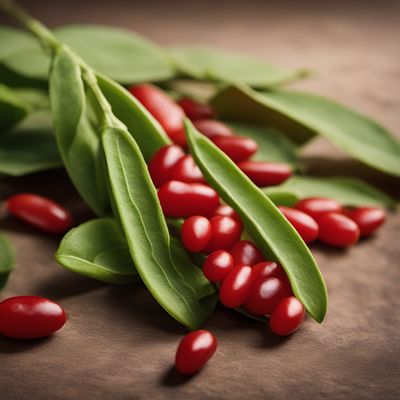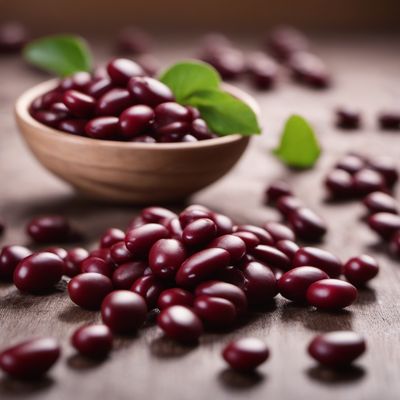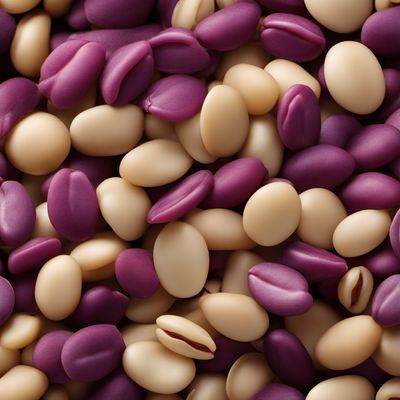
Ingredient
Jack beans (without pods)
The Versatile Legume: Unveiling the Wonders of Jack Beans
Jack beans are large, flat legumes that are typically beige or cream in color. They have a smooth texture and a slightly nutty flavor. These beans are known for their high protein content and are often used as a meat substitute in vegetarian and vegan dishes. They can be cooked and enjoyed in various ways, including boiling, steaming, or incorporating them into soups, stews, and salads.
Origins and history
Native to tropical regions of Central and South America, jack beans have a rich historical background. They have been cultivated for centuries and were an important food source for indigenous communities. Over time, they spread to other parts of the world, including Africa and Asia, where they continue to be grown and consumed today.
Nutritional information
Jack beans are a nutritional powerhouse, packed with essential nutrients. They are an excellent source of plant-based protein, fiber, and complex carbohydrates. Additionally, they provide significant amounts of iron, magnesium, potassium, and folate.
Allergens
Jack beans are not commonly associated with allergies, making them a suitable choice for individuals with various dietary restrictions.
How to select
When selecting jack beans, look for beans that are firm, plump, and free from any signs of mold or damage. Avoid beans that appear wrinkled or discolored. If purchasing from a farmers market, opt for organic varieties to ensure the highest quality.
Storage recommendations
To maintain the freshness and quality of jack beans, store them in an airtight container in a cool, dry place. They can also be stored in the refrigerator for up to a week. Avoid exposing them to moisture, as it can lead to spoilage.
How to produce
Jack beans can be grown by amateur gardeners in warm climates. They require well-drained soil and full sun exposure. Sow the seeds directly into the ground or in containers, ensuring a spacing of about 6 inches between each seed. Regular watering and occasional fertilization will promote healthy growth.
Preparation tips
Before cooking jack beans, it is recommended to soak them overnight to reduce cooking time and improve digestibility. Rinse the soaked beans thoroughly before cooking. They can be boiled, steamed, or pressure-cooked until tender. To enhance their flavor, consider adding herbs, spices, or aromatics during the cooking process.
Culinary uses
Jack beans are incredibly versatile and can be used in a variety of culinary applications. They can be added to soups, stews, and curries to provide a hearty and nutritious element. They can also be mashed and formed into patties for vegetarian burgers or used as a filling for tacos and burritos. Additionally, jack beans can be sprouted and used in salads or as a garnish for sandwiches and wraps.
Availability
Jack beans are commonly available in tropical regions, including Central and South America, Africa, and parts of Asia.
More ingredients from this category » Browse all

Mung beans (without pods)
The Mighty Mung: Unlocking the Power of Mung Beans

Stink beans (without pods)
The Pungent Delicacy: Stink Beans Unleashed

Runner beans (without pods)
The Vibrant Green Delight: Unveiling the World of Runner Beans

Tepary bean (fresh seeds)
The Resilient Legume

Black eyed peas (without pods)
The Versatile Legume: Black Eyed Peas

Azuki beans (without pods)
The Versatile Azuki Beans

Rice beans (without pods)
The Versatile Rice Bean

Monantha vetches (without pods)
The Versatile Monantha Vetches

Lablab beans (without pods)
The Protein Powerhouse

Mat bean (fresh seeds)
The Mighty Mat Bean: A Nutritional Powerhouse

Soyabeans (without pods)
The Mighty Bean: Unleashing the Power of Soyabeans

Vetches (without pods)
The Versatile Vetch